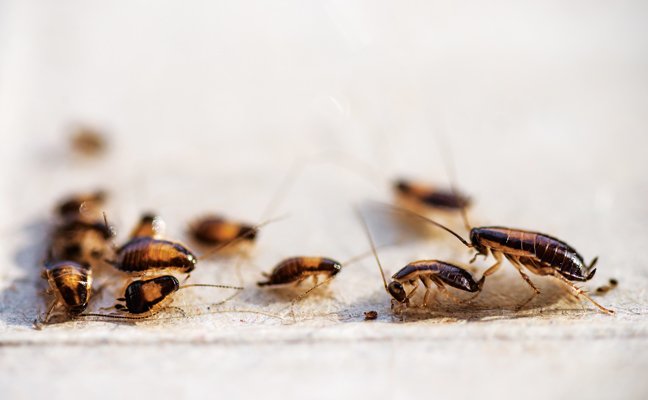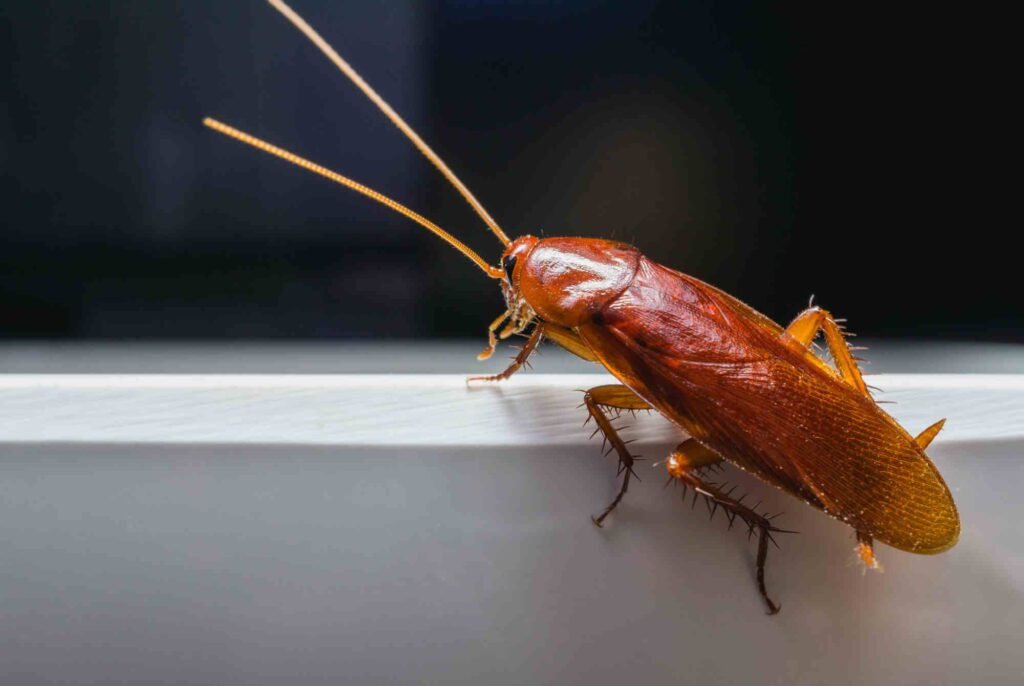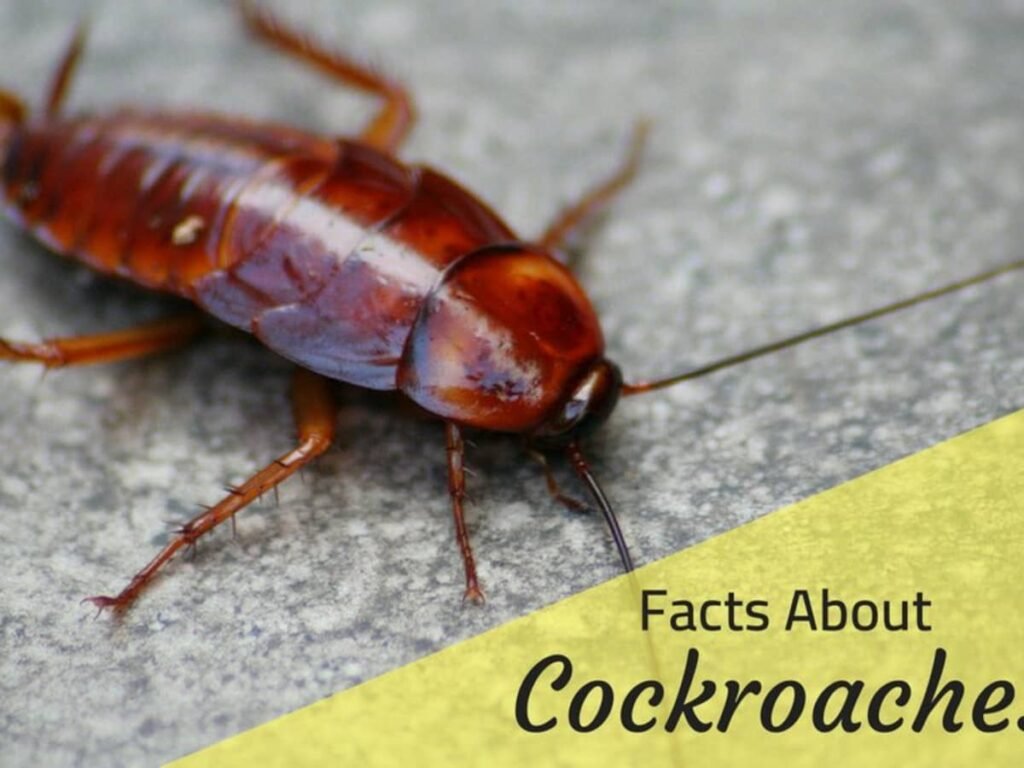Are you tired of dealing with pesky cockroaches in your Boston home? Look no further! In this article, we will explore effective strategies for roach extermination in Beantown, so you can reclaim your space and live roach-free.
When it comes to cockroach control, it’s important to understand that a comprehensive approach is key. Firstly, maintaining a clean and sanitary environment is essential. Make sure to regularly sweep, mop, and vacuum your floors to eliminate any food particles or crumbs that might attract these unwanted visitors. Additionally, sealing up any cracks or crevices in your walls or foundation can prevent roaches from entering your home in the first place.
Next, consider using cockroach baits or traps. These can be strategically placed in areas where roaches are commonly found, such as the kitchen or bathroom. These traps are designed to lure roaches and eliminate them, providing an effective method of control.
Furthermore, insecticides can also be used as part of a comprehensive roach control plan. However, it’s essential to use these products with caution and follow the instructions carefully to ensure the safety of yourself, your family, and your pets.
Remember, dealing with a cockroach infestation can be a daunting task, but with these effective strategies for roach extermination in Beantown, you can tackle the problem head-on and enjoy a roach-free home once again.
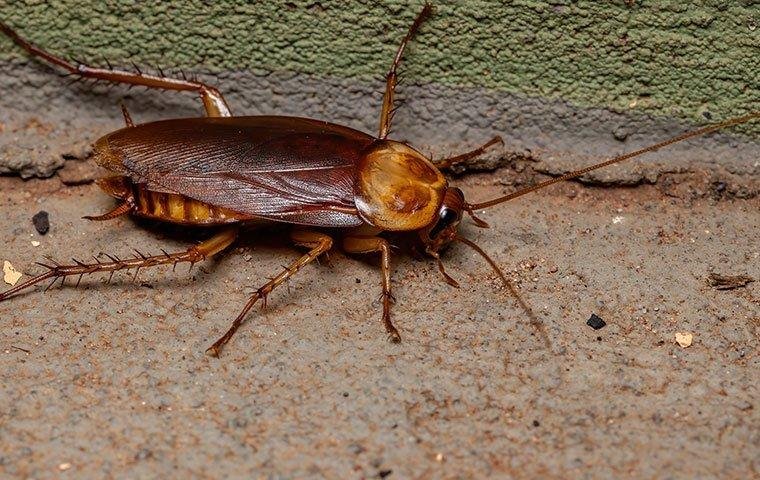

Understanding Cockroaches
Cockroaches, while often considered pests, are fascinating creatures with a long history of coexisting with humans. In Boston, several species of cockroaches can be found, each with its own unique characteristics and behaviors that contribute to their survival in urban environments.
Cockroach Species Found in Boston
In Boston, the most common cockroach species encountered are the German cockroach (Blattella germanica) and the American cockroach (Periplaneta americana). The German cockroach is smaller in size, usually ranging from 1/2 to 5/8 of an inch in length, while the American cockroach is larger, reaching lengths of up to 2 inches. Both species have wings, although the German cockroach prefers to stay grounded.
Cockroach Behavior and Habits
Cockroaches are highly adaptable and resilient insects that thrive in warm and humid environments. They are mostly active at night, seeking out dark and secluded areas to hide during the day. Cockroaches are omnivorous, feeding on a wide variety of organic materials. They are particularly attracted to food crumbs, grease, and garbage, making kitchens and dining areas prime targets for infestations.
Apart from their ability to survive on meager food sources, cockroaches can also tolerate extreme conditions, such as high temperatures, limited access to water, and even certain chemicals. This adaptability explains why these persistent pests can be challenging to eradicate once an infestation occurs.
Health Risks Associated with Cockroaches
Cockroaches are not only nuisances but also carry significant health risks. They can contaminate food and utensils with various pathogens, including bacteria like Salmonella and E. coli. These bacteria can cause food poisoning and other gastrointestinal illnesses when ingested. Additionally, cockroach allergens, found in their saliva, feces, and shed body parts, can trigger allergies and asthma attacks, particularly in susceptible individuals.
Identifying a Roach Infestation
Recognizing the signs of a cockroach infestation is crucial for timely intervention and effective control. By familiarizing yourself with these indicators, you can take proactive measures to minimize the risks and prevent the infestation from spreading.
Common Signs of Roach Infestation
One of the most obvious signs of a roach infestation is the presence of live or dead cockroaches in areas where they shouldn’t be, such as kitchen cabinets, bathroom corners, or basement crevices. Additionally, their droppings, resembling small black granules or coffee grounds, can be found near their hiding spots and along their regular travel routes.
Another telltale sign is the distinct musty odor that cockroaches emit. If you notice an unpleasant, lingering smell, especially in enclosed spaces, it could indicate a significant infestation nearby. Lastly, roach egg capsules, called oothecae, may be found in hidden areas, like cracks, wall voids, or behind appliances. These capsules contain multiple eggs and serve as evidence of ongoing breeding activity.
Areas of the Home Prone to Roach Infestation
Cockroaches can infest various areas of the home, but they tend to concentrate in specific locations that offer suitable conditions for their survival. Kitchens, with their ample food supply and warm environments, are a favored haven for roaches. Crumbs, spills, and food debris left unattended provide a ready feast for these persistent pests. Bathrooms, often damp and humid, are also attractive to cockroaches. They seek out moisture and water sources to thrive and reproduce.
In addition to kitchens and bathrooms, roaches can infiltrate basements and storage areas, as these spaces often provide darkness, shelter, and hiding spots. Cracks and crevices in walls, floors, and ceilings serve as gateways for these resilient insects to enter your living spaces.
Difference Between German and American Cockroaches
While both the German and American cockroach species are common in Boston, they differ in appearance and behavior. German cockroaches are smaller, have a light brown or tan color, and distinctive dark stripes behind their heads. They prefer to infest indoor spaces, primarily kitchens, where they can find a regular food source and warmth. The American cockroach, on the other hand, is larger, reddish-brown in color, and occasionally flies. They are more likely to be found in outdoor areas, like sewer systems or basements, but can also venture into homes for shelter and resources.
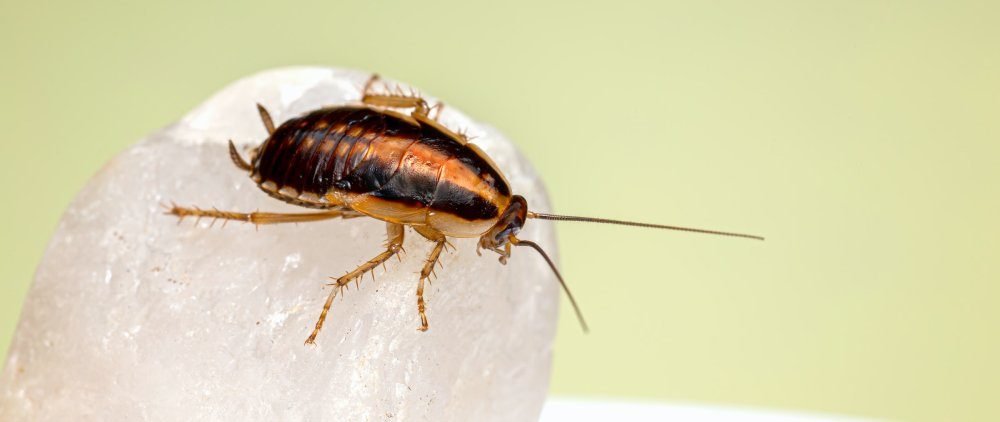

Preventive Measures
Preventing cockroach infestations is the best defense against these pests. By implementing proper hygiene practices and taking proactive measures, you can significantly reduce the chances of roaches invading your home.
Keeping a Clean and Sanitary Environment
Maintaining cleanliness in your living spaces is paramount to deterring roaches. Start by regularly cleaning your kitchen, wiping down countertops, and promptly addressing spills or food debris. Sweep and mop floors to eliminate potential food sources. Vacuuming rugs and upholstery also helps remove any crumbs or hiding places.
In addition to the kitchen, pay attention to your bathroom and laundry areas. Clean up any water puddles, fix leaky faucets or pipes, and ensure proper ventilation to prevent excess moisture buildup. Cockroaches thrive in humid environments, so reducing moisture levels is crucial to make your home less inviting to these pests.
Sealing Cracks and Entry Points
Roaches can enter your home through even the tiniest of openings. Inspect your property for any cracks, gaps, or holes in walls, windows, doors, and foundations. Seal these potential entry points using caulk, weatherstripping, or other appropriate materials. Pay close attention to areas where utility lines, such as plumbing or electrical, enter the building, as roaches often exploit these openings as well.
Proper Food Storage and Disposal
Roaches are opportunistic feeders, and leaving food sources accessible is an open invitation for an infestation. Store all food items, including pet food, in airtight containers to prevent roaches from contaminating them. Regularly clean out your pantry and discard expired or unwanted food items.
Equally important is maintaining good garbage management practices. Dispose of trash regularly and store it in sealed bins both indoors and outdoors. Keep recycling bins clean and free of food residue, as roaches can easily find sustenance in improperly handled recyclables.
Natural Roach Control Methods
While chemical interventions can be effective, some individuals prefer natural alternatives for roach control. Here are some natural methods that can help repel and eliminate cockroaches.
Using Boric Acid
Boric acid is a widely recognized and effective natural roach killer. It comes in the form of a white powder and works by dehydrating the pests. Apply boric acid in areas where cockroaches frequent, such as behind kitchen appliances, along baseboards, and near entry points. Use caution when handling boric acid, as it can be harmful if ingested or inhaled.
Creating Homemade Roach Baits
Homemade roach baits can serve as an eco-friendly solution to attract and eliminate roaches. Common ingredients for homemade baits include boric acid, sugar, and water. Mix these ingredients to form a paste and place it in areas where cockroach activity is detected. The sugar acts as an enticing bait, while the boric acid acts as a lethal agent.
Essential Oil Repellents
Certain essential oils, such as peppermint oil, eucalyptus oil, and tea tree oil, have shown repellent effects on cockroaches. Their strong scents act as natural deterrents, discouraging roaches from entering treated areas. Dilute a few drops of these essential oils in water and spray the solution in infested areas or potential entry points.


Chemical Roach Control Methods
When natural methods are not sufficient or the infestation is severe, chemical interventions can provide more immediate and effective results. Here are the primary chemical options for roach control.
Insecticide Sprays
Insecticide sprays formulated specifically for cockroach control can be used to target live roaches directly. These sprays contain active ingredients designed to kill roaches upon contact. Remember to follow the instructions carefully and apply the spray in areas where roaches tend to hide or travel.
Roach Bait Stations
Roach bait stations work by attracting roaches to consume poisoned bait. The roaches then carry the poisoned bait back to their nests, effectively exterminating the entire colony. Bait stations are strategically placed where roaches are likely to encounter them, such as along baseboards, in cabinets, or under sinks.
Foggers and Aerosol Bombs
Foggers, also known as bug bombs, release a fine mist of insecticide into an enclosed space, effectively killing roaches and other pests present. Aerosol bombs are similar but come in a pressurized canister for targeted applications. These methods are best suited for larger infestations or treating entire rooms. However, caution must be exercised as they require proper preparation and can be hazardous if used incorrectly.
Hiring Professional Exterminators
When all else fails or when dealing with extensive and persistent infestations, seeking professional help from experienced exterminators is a prudent choice. Professional pest control companies have the knowledge, expertise, and specialized tools to tackle severe roach problems effectively.
When to Consider Professional Help
Consider hiring professional exterminators in the following scenarios:
- The infestation persists despite your best efforts using DIY methods.
- The infestation poses considerable health risks, especially to individuals with allergies or asthma.
- The infestation is widespread, affecting multiple areas of your home.
- You are uncertain about the severity or type of infestation.
Choosing a Reliable Pest Control Company
When selecting a pest control company, conduct thorough research to ensure you choose a reputable and reliable service provider. Look for companies licensed by the appropriate regulatory bodies and inquire about their experience in dealing with cockroach infestations. Reading online reviews and seeking recommendations from friends or neighbors can also help in making an informed decision.
What to Expect from the Extermination Process
During the extermination process, professional technicians will conduct a comprehensive inspection of your property to identify the extent and source of the infestation. They will then determine the appropriate treatment plan, which may involve a combination of techniques, such as baiting, spraying, or fogging. The technicians will ensure the safety of your family, explain any necessary precautionary measures, and provide guidance on preparing the space before treatment.


Precautions and Safety Tips
While dealing with roach extermination, it is essential to prioritize safety for both yourself and your loved ones. Follow these precautions to minimize potential hazards associated with pest control measures.
Protective Measures During Roach Extermination
During the extermination process, take the following precautions:
- Vacate the treated area as advised by the professionals or as stated in the product instructions.
- Cover or remove exposed food, utensils, and dishes to prevent contamination.
- Unplug electrical appliances and cover aquariums before treatment.
- Avoid touching or inhaling any chemicals or treated surfaces.
Safe Handling of Pesticides
When handling pesticides, adhere to these safety guidelines:
- Read and follow all instructions and warnings provided by the manufacturer.
- Wear appropriate personal protective equipment (PPE), such as gloves, goggles, and masks, when handling or applying pesticides.
- Keep pesticides out of reach of children and pets, storing them in locked cabinets or areas inaccessible to them.
- Properly dispose of any unused or expired pesticides according to local regulations.
Keeping Children and Pets Safe
When undergoing roach control measures, take extra precautions to ensure the safety of children and pets:
- Keep children and pets away from treated areas until it is safe to re-enter.
- Store pesticides securely and out of reach to prevent accidental ingestion or exposure.
- Teach children about the potential hazards of pesticides and the importance of avoiding contact with treated surfaces.
Maintaining a Roach-Free Home
After successfully dealing with a roach infestation, it is important to implement ongoing measures to maintain a pest-free environment.
Regular Cleaning and Maintenance
Continue practicing good hygiene and cleaning habits to prevent a recurrence of infestations. Regularly sweep, mop, and vacuum areas prone to crumbs or spills. Inspect and clean moisture-prone areas, such as bathrooms and kitchens, to prevent roaches from being attracted to these spaces. Keep garbage containers and recycling bins tightly sealed and dispose of trash promptly.
Continued Prevention and Monitoring
Maintain a vigilant approach to prevent roaches from re-infesting your home. Seal any new cracks or entry points that may arise over time. Employ natural deterrents, such as essential oil sprays, in areas susceptible to infestations. Monitor dark and secluded areas regularly for any signs of roach activity, acting swiftly at the first signs of re-infestation.
Dealing with Recurring Infestations
If you experience recurring roach infestations despite your efforts, it may be necessary to reassess and reinforce preventive measures or seek professional assistance. A reliable pest control company can assess the situation, identify any underlying contributing factors, and provide tailored solutions to resolve the issue once and for all.
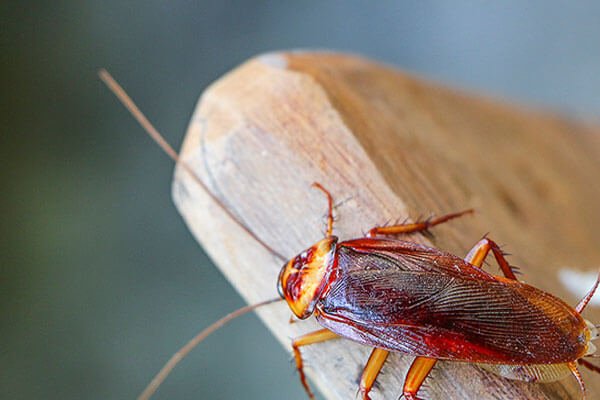

Roach Control in Different Areas
The presence of cockroaches can vary depending on the specific areas within your home. Here are some strategies for tackling infestations in different spaces.
Kitchen and Dining Areas
In the kitchen and dining areas, where food sources are abundant, take extra precautions:
- Regularly clean countertops, sinks, and stovetops to eliminate food residue.
- Store food in airtight containers and promptly dispose of any scraps.
- Seal cracks or crevices around plumbing and electrical fixtures.
- Install door sweeps and repair damaged screens to prevent roaches from entering.
Bathroom and Plumbing
To deter roaches in bathrooms and plumbing areas, consider the following preventive measures:
- Fix any leaks or plumbing issues to eliminate excess moisture.
- Keep drains clean and unclogged, as roaches can use them as pathways.
- Clear clutter and remove hiding spots, such as under sinks or behind toilet fixtures.
- Seal gaps around pipes or drains using caulk or weatherstripping.
Basement and Storage Areas
Basements and storage areas often provide ideal environments for roaches. To control infestations in these spaces:
- Reduce humidity by using dehumidifiers or fans.
- Remove potential food sources, such as old cardboard boxes or stored organic materials.
- Store clothing items and other susceptible materials in sealed plastic bins.
- Eliminate clutter and seal cracks or gaps in walls and foundations.
Conclusion
In conclusion, understanding cockroaches and implementing effective strategies for control is vital for maintaining a healthy and pest-free environment in Boston. By familiarizing yourself with the different cockroach species, their behaviors, and the signs of an infestation, you can take proactive steps to prevent and address roach problems. Whether through natural methods, chemical interventions, or professional exterminators, there are various ways to combat infestations and safeguard your home and loved ones. Remember, ongoing maintenance and vigilance are key to sustaining a roach-free environment and preserving the well-being of your household. Boston Cockroach Control: Effective Strategies for Roach Extermination in Beantown.
Your Expert in Animal Control and Extermination. Trust our experience for humane, effective pest management, protecting your property and ensuring peace of mind with Michael S.



